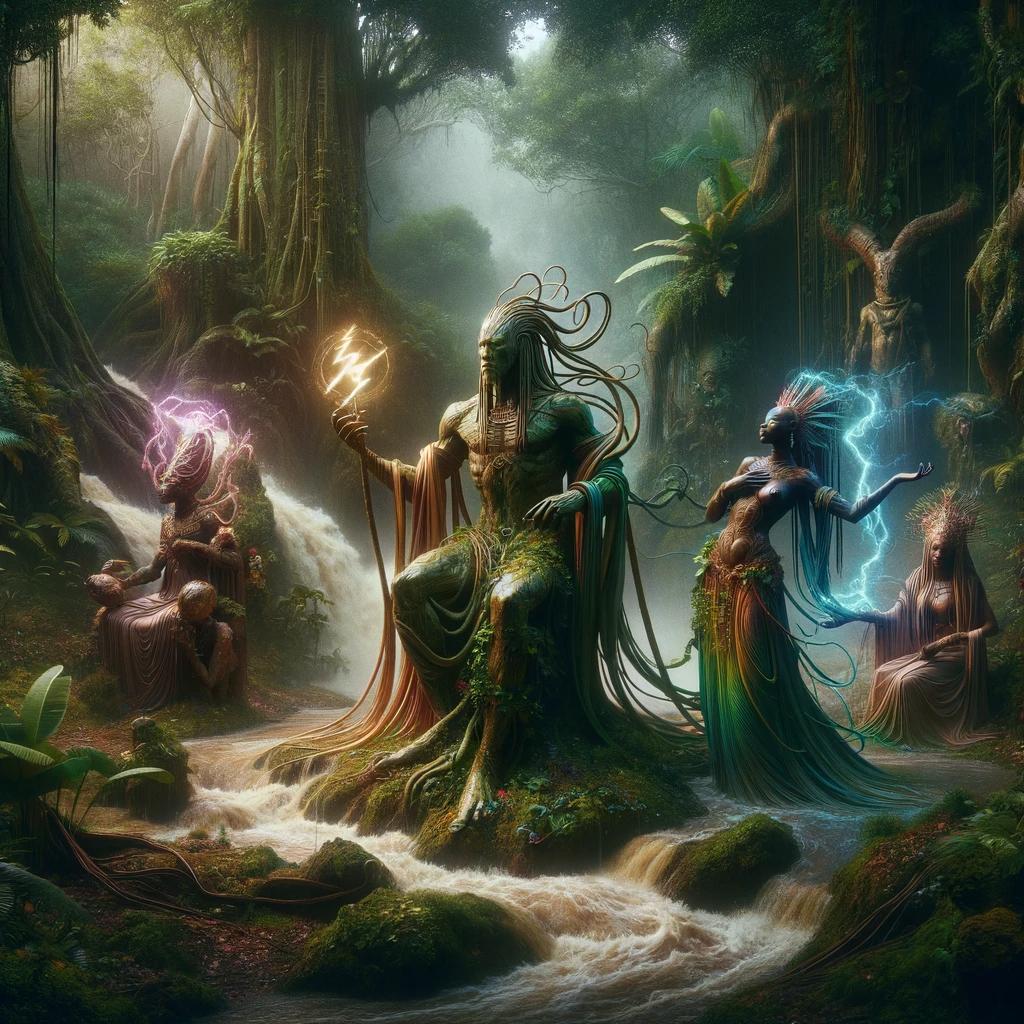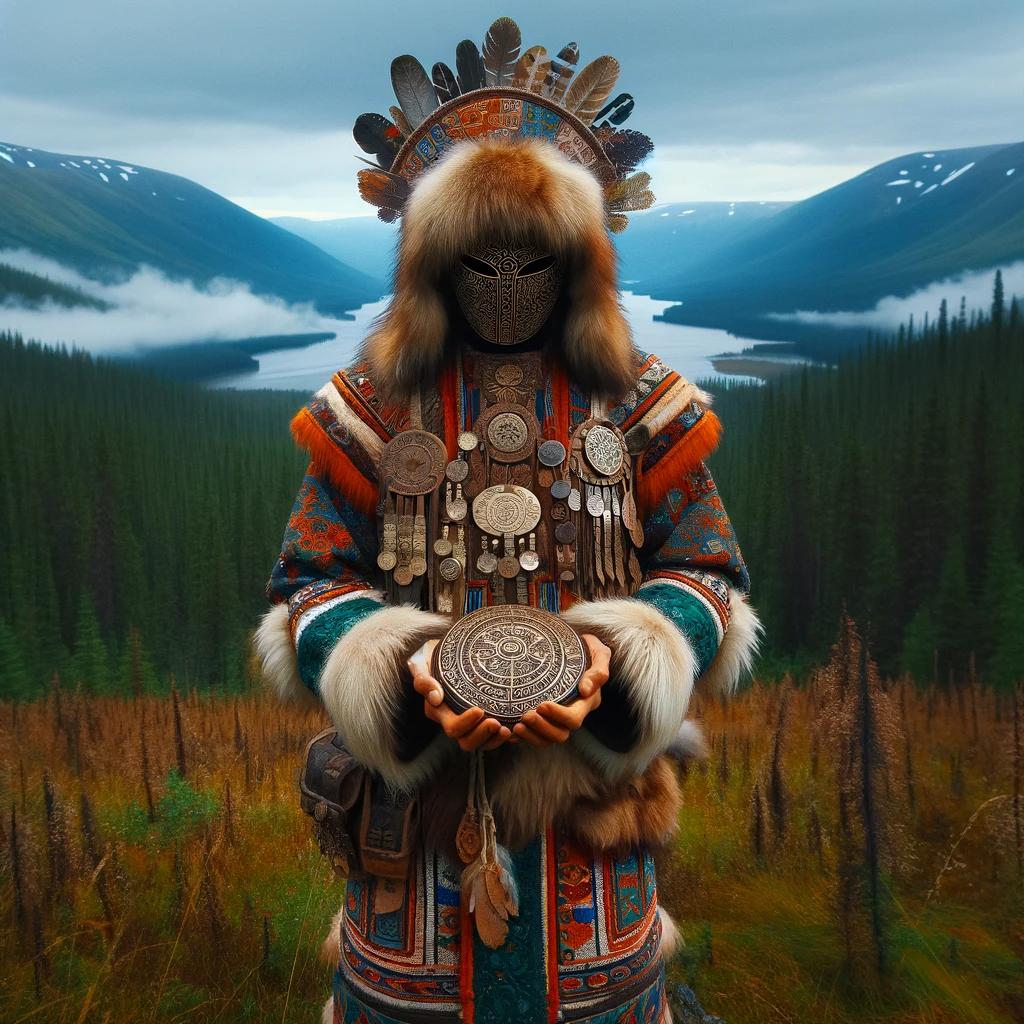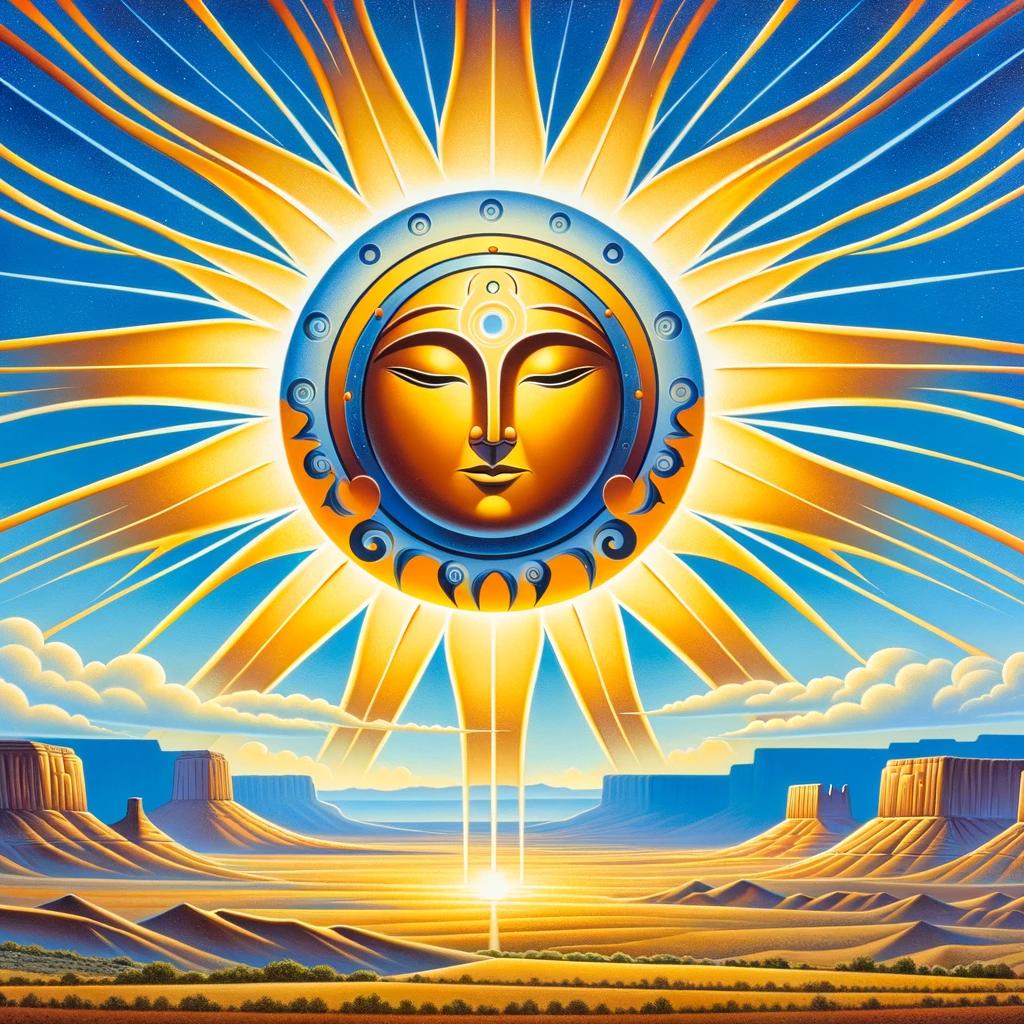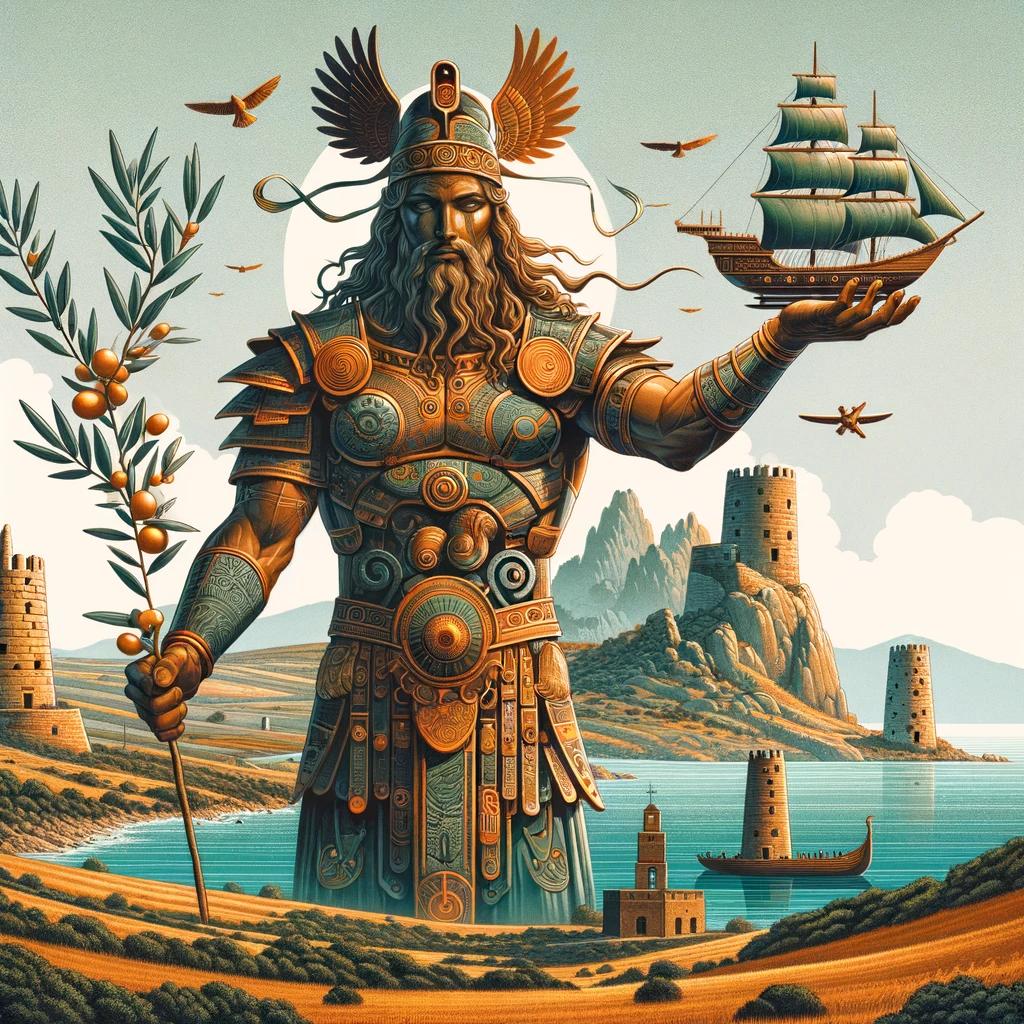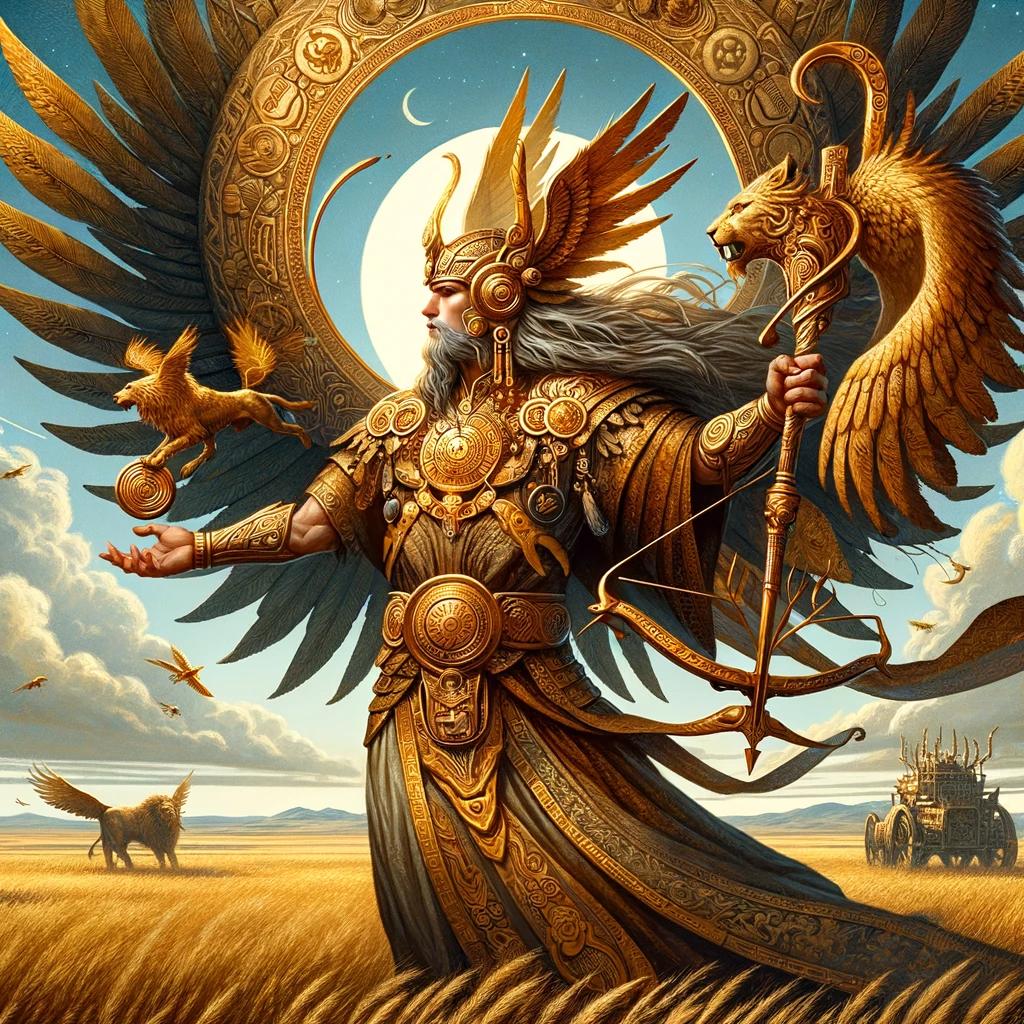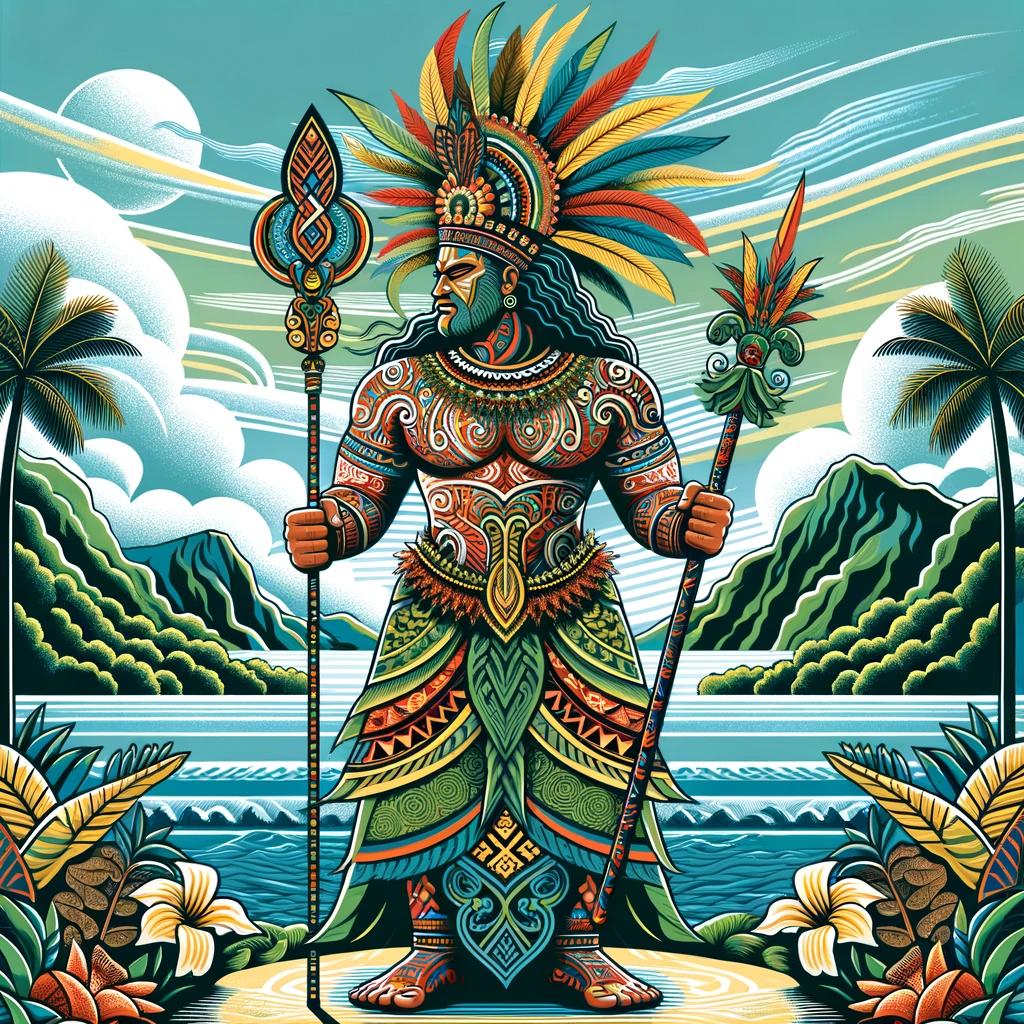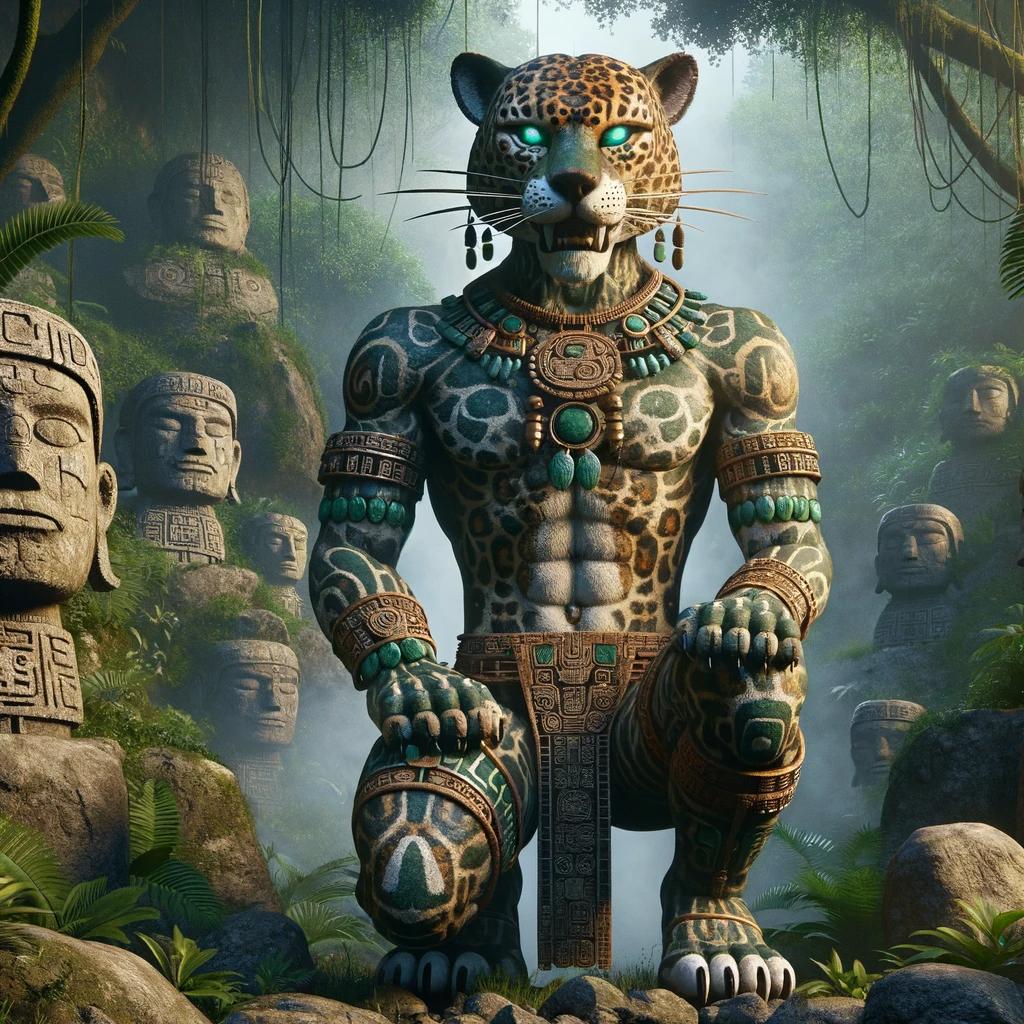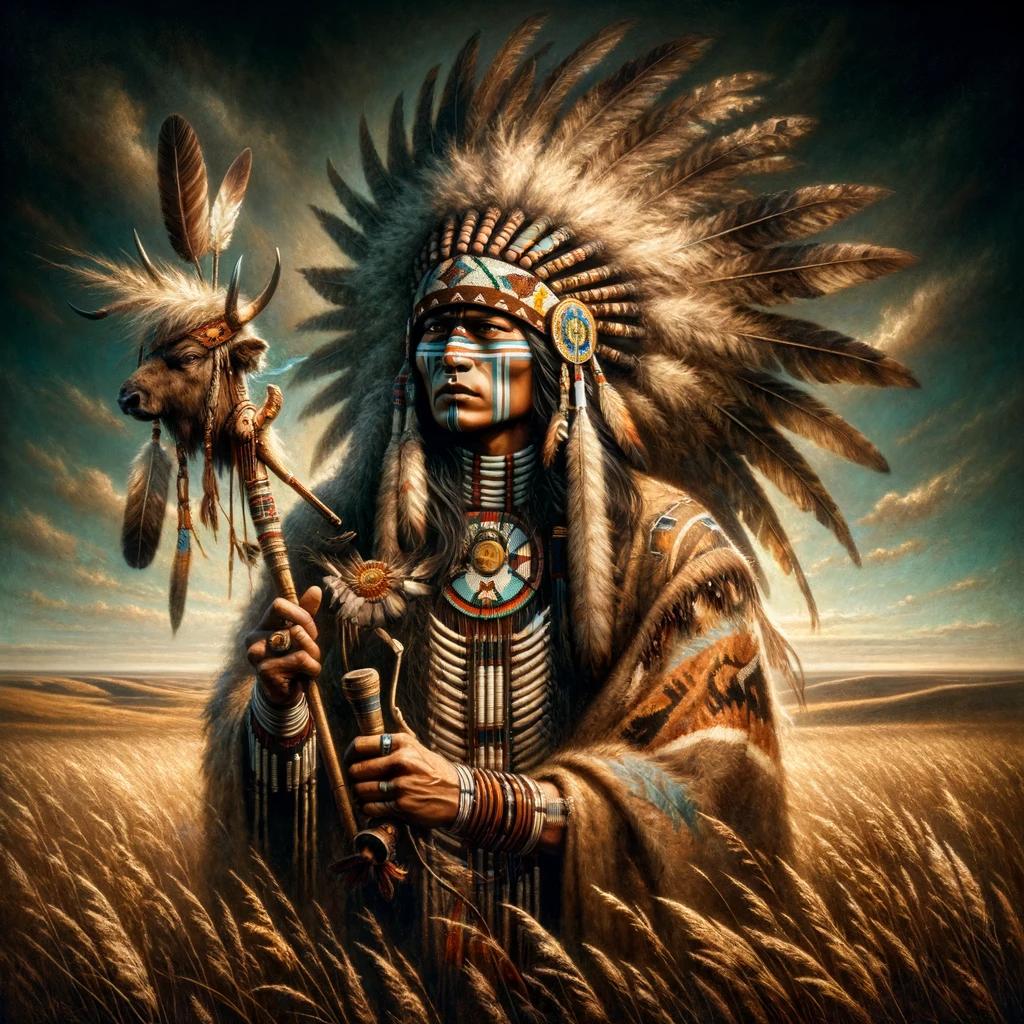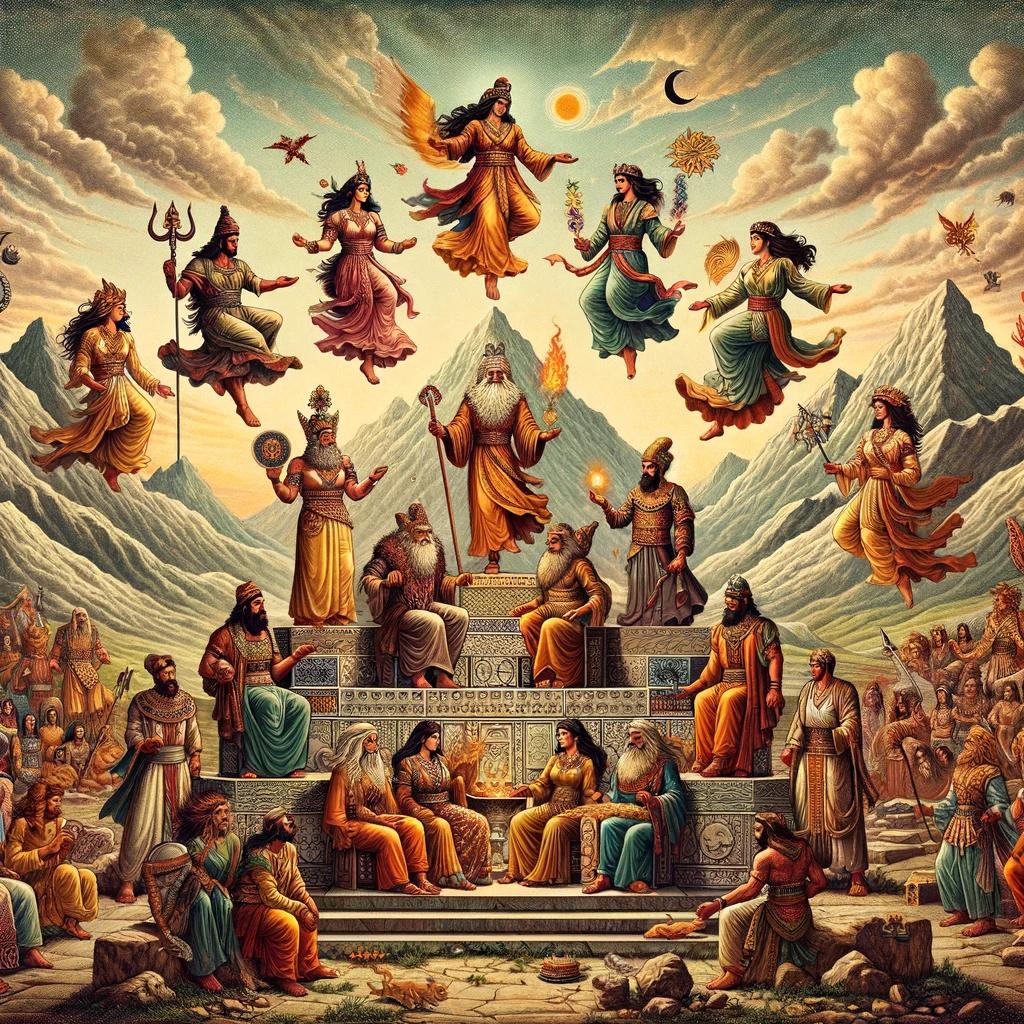Exploring the Rich Legends of Congo Mythology: Unveiling the Intriguing Tales from the Heart of Africa
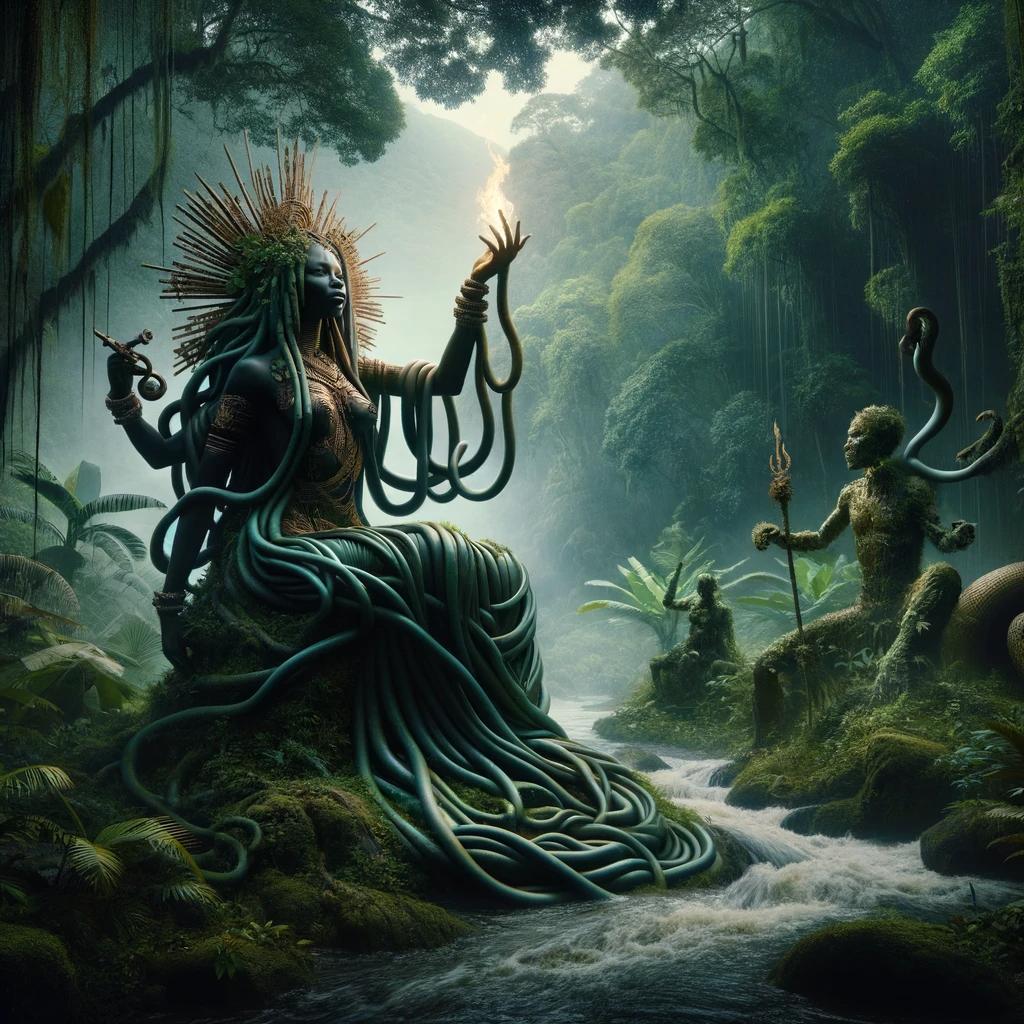
Congo mythology is a rich tapestry of ancient tales and deities that have been passed down through the centuries. The Mbuti people, also known as the Bambuti, are one of the well-known ethnic groups associated with this mythology.
Their pantheon includes Khonvoum, the god of hunting, who wields a serpents-formed bow that resembles a rainbow to humans. Other significant deities include Gor, the god of thunder, and Arebati, the lunar deity and father of the sky.
These myths explore creation, the afterlife, and the spiritual connection between humans and the natural world. Stay tuned for a deeper exploration of Congo mythology.
Origins of Congo Mythology
The mythology of Congo has its origins rooted in the rich traditions and beliefs of African mythology. The diverse cultural landscape of Africa has influenced the development of Congo mythology, shaping its unique tales and deities.
African Mythology and its Influences on Congo Mythology
African mythology, with its wide array of gods, creation stories, and spiritual practices, has played a significant role in shaping Congo mythology. It has provided a foundation for the beliefs and narratives that exist within the Congo region.
Themes such as the creation of the world and its inhabitants, the relationship between humans and nature, and the existence of supernatural beings resonate throughout both African and Congo mythology, establishing a connection and continuity between these traditions.
This influence can be observed in the shared motifs, symbolism, and rituals present in both African and Congo mythology. The concepts of ancestral spirits, divine intervention, and the interplay between gods and humans are recurrent themes that reflect the intertwined nature of these mythological systems.
Cultural Significance of Congo Mythology in the Mbuti Community
Within the Mbuti community, Congo mythology holds immense cultural significance. It serves as a guiding framework for understanding the world, explaining natural phenomena, and establishing social norms and values.
Through the myths and legends passed down through generations, the Mbuti people find a sense of identity, connection to their ancestral roots, and a basis upon which their traditions and communal practices are built.
Congo mythology provides the Mbuti community with a profound understanding of their place within the natural and spiritual realms. It emphasizes their harmonious relationship with the land, the significance of the hunt, and the interconnectedness of all living beings.
By preserving and passing on these myths, the Mbuti people celebrate their heritage and reinforce their cultural cohesion, fostering a deep appreciation for their unique mythology and the wisdom it imparts.
Deities and Creatures in Congo Mythology
The mythology of Congo is filled with fascinating deities and creatures that are revered by the Mbuti people and other communities. These mystical beings play significant roles in the cosmology and belief system of Congo mythology.
Khonvoum: The God of Hunting and Sun Revitalization
Khonvoum, known as the god of hunting, holds a prominent place in Congo mythology. He wields an extraordinary bow, formed by two serpents resembling a rainbow to humans. Khonvoum’s divine duty is to gather fragments of stars after sunset and hurl them to the sun, rejuvenating it for the following day.
He communicates with mortals through Gor, a thunder god who can also transform into an elephant, or a chameleon, akin to the divine messenger in Yoruba mythology. According to the myth, Khonvoum molded humanity using different types of clay, with black clay representing black people, white clay representing white people, and red clay symbolizing the Pygmies, themselves.
Gor: The Thunder God and Messenger of Khonvoum
Gor, the thunder god in Congo mythology, serves as both the messenger of Khonvoum and a deity in his own right. He possesses immense power and is capable of transforming into an elephant.
Gor acts as a conduit between the divine and mortal realms, delivering messages and carrying out the will of Khonvoum. The rumbling sound of thunder is often attributed to Gor’s mighty presence, instilling both awe and reverence.
Arebati: The Lunar Deity and Father of the Sky
Arebati, the lunar deity, holds an essential role in Congo mythology as the father of the sky. He is associated with the moon and its cycles, symbolizing the passage of time and influencing various aspects of life.
Arebati is revered for his wisdom and connection to the celestial realm, often invoked for guidance and blessings. His influence extends beyond mere lunar phases, encompassing the greater divine order present in the cosmos.
Tore: The Forest God and Provider of Animals
Tore, the forest god in Congo mythology, is revered as the guardian of the woodlands and provider of animals for the hunters. He embodies the spirit of the forests, possessing deep knowledge of the natural world and maintaining harmony between humans and their environment.
Tore is both a nurturing deity and a potent force, offering sustenance and guidance to those who respect and honor the intricacies of nature.
Creation Myths in Congo Mythology
Creation myths hold a central place in Congo mythology, offering insights into the origins of humanity and the diversity of ethnicities. These myths are deeply intertwined with the divine figure of Khonvoum, who played a pivotal role in shaping the world as we know it.
The Divine Creation of Humanity by Khonvoum
According to Congo mythology, Khonvoum, the god of hunting and sun revitalization, is credited with creating humanity. Using clay as his medium, Khonvoum molded each individual with divine craftsmanship, imbuing them with unique characteristics and destinies.
Clay as the Medium in Creating Different Ethnicities
A fascinating aspect of Congo mythology is the belief in the use of different clay types to represent various ethnicities. Khonvoum shaped black clay to create black people, white clay for white individuals, and red clay specifically for the pygmy community, known as the Bambuti.
The Role of Minkisi: Objects of Power in Congo Mythology
Minkisi, powerful objects imbued with the spirits of nature, play a significant role in Congo mythology. These objects, known as Bakisi, are deeply revered and serve as conduits for communication with the divine.
They hold the power to protect, heal, and provide guidance to those who invoke their aid.
Sacred Beliefs and Rituals in Congo Mythology
The sacred beliefs and rituals in Congo mythology hold a profound significance in the lives of its followers, providing guidance and connection to the spiritual realm. These beliefs shape their understanding of the journey through life and the afterlife, the role of ancestors and spirits, as well as the practice of shamanic rituals for healing and spiritual transformation.
The Spiritual Journey and Afterlife in Congo Mythology
In Congo mythology, life is seen as a spiritual journey with multiple stages, each carrying its own symbolic meaning. The journey begins with Musoni, a time when individuals exist as ancestral spirits.
This is followed by Kala, representing childhood and the rebirth of the soul. Tukula comes next, symbolizing adulthood and the peak of creative potential. Finally, Luvemba marks the transition from this world to the next.
Role of Ancestors and Spirits in Congolese Society
Ancestors and spirits hold a central role in Congolese society, acting as intermediaries between humans and the divine. They are believed to offer guidance, protection, and blessings. Rituals and ceremonies are conducted to honor and communicate with ancestors, seeking their wisdom and assistance in various aspects of life.
The belief in ancestral spirits strengthens kinship ties and fosters a sense of communal identity.
Shamanic Practices and Healing in Congo Mythology
Shamanic practices play a vital role in Congo mythology, providing avenues for spiritual healing and transformation. Shamanic healers, known as ngangas, serve as intermediaries between the physical and spiritual realms. Through rituals, music, dance, and herbal remedies, they facilitate healing, cleanse spiritual impurities, and restore balance to individuals and communities.
- Shamanic rituals often involve trance states and journeying to connect with spirits and divine forces
- Herbal remedies, prepared from plants believed to possess spiritual properties, are used for physical and spiritual healing
- Rhythmic drumming and dancing serve as conduits for accessing spiritual energies and invoking divine presence
- Shamanic rituals also encompass divination practices for guidance and insight into personal and communal matters
These sacred beliefs and rituals, deeply rooted in Congo mythology, continue to shape the spirituality and cultural practices of the Congolese people, providing a lens through which they understand the interconnectedness of the physical and spiritual realms.
Dissemination of Congo Mythology through History
The mythological beliefs and stories of Congo have significantly influenced various African religions throughout history.
Influence of Congo Mythology on African Religions
Congo mythology, with its diverse pantheon and rich narratives, has played a crucial role in shaping the religious traditions of neighboring African communities. Influences can be seen in the worship of deities associated with nature, fertility, and ancestral spirits.
The concepts of divine creation and the afterlife, as found in Congo mythology, have also permeated into the belief systems of many African cultures.
Transatlantic Slave Trade and the Spread of Congo Mythology
During the era of the transatlantic slave trade, Congo mythology underwent a profound transformation as African slaves were forcibly transported to the Americas.
The beliefs and myths of Congo were carried across the Atlantic, where they merged with indigenous beliefs and traditions, giving rise to new syncretic religions such as Palo, Umbanda Bantu, and Haitian Vodou.
The fusion of Congo mythology with other cultural elements resulted in unique religious practices that continue to thrive in the African diaspora today.
Cultural Preservation Efforts in Preserving Congo Mythology
Recognizing the importance of preserving Congo mythology, dedicated efforts have been made to safeguard its traditions and stories. Projects like ‘Congo Tales’ have emerged, utilizing multimedia platforms to collect and share oral myths from the Republic of Congo.
These initiatives aim to raise awareness, encourage cultural exchange, and ensure the continued transmission of Congo mythology to future generations.
Through the dissemination of Congo mythology, both through religious influences and cultural preservation efforts, the rich traditions and spiritual beliefs of this ancient mythology continue to captivate minds and shape the cultural landscape.
Contemporary Relevance and Impact of Congo Mythology
Congo mythology continues to have a significant influence and relevance in contemporary society, shaping cultural identity and contributing to various forms of artistic expression and cultural projects. The mythology’s profound impact can be observed in modern art, literature, music, and media, which often draw inspiration from the rich folklore and symbolism embedded within Congo mythology.
Representation in Modern Art and Media
Within the realm of modern art and media, Congo mythology serves as a source of inspiration for many artists seeking to explore African cultural heritage and challenge conventional narratives. Through paintings, sculptures, and installations, artists incorporate the themes, deities, and creatures from Congo mythology, providing a platform for cultural representation and fostering a deeper understanding of Congolese traditions.
Moreover, Congo mythology has found its way into literature and storytelling, with authors weaving captivating tales that incorporate the enchanting characters and narratives from the mythology. These literary works not only entertain readers but also serve as a means to preserve and share Congo’s cultural heritage, ensuring that future generations continue to engage with and appreciate these ancient stories.
The ‘Congo Tales’ Project: Revitalizing and Sharing Congolese Culture
A remarkable initiative known as the ‘Congo Tales’ project has emerged, aiming to revitalize and share the rich culture embedded in Congo mythology with the rest of the world. This multimedia project serves as a platform to preserve traditional oral myths by incorporating stunning photography and showcasing the people who reside within the Odzala-Kokoua National Park.
By employing storytelling, vivid imagery, and scientific research, ‘Congo Tales’ strives to change the global narrative surrounding the region, highlighting its cultural significance and the urgent need to protect and preserve this valuable heritage.
The project also promotes cultural exchange, fostering a better understanding and appreciation of Congo mythology internationally.
Through the ‘Congo Tales’ project, the ancient stories, teachings, and beliefs of Congo mythology are brought to life, giving them a contemporary relevance and ensuring their continued transmission to the present and future generations.
Conclusion
Congo mythology’s contemporary relevance and impact cannot be overstated. Its influence on modern art, media, literature, and cultural projects showcases the enduring significance of Congo’s rich cultural heritage. The ‘Congo Tales’ project, in particular, stands as a testament to the power of mythology in preserving traditions, fostering cultural exchange, and shaping cultural identities.
By engaging with Congo mythology, we uncover a world of captivating tales and timeless wisdom that continues to resonate in the hearts and minds of people today.
Exploring African Mythology: Beyond Congo
Embark on a journey beyond Congo mythology to explore the rich tapestry of African mythologies.
This section delves into a comparative analysis of various African mythologies, shedding light on the similarities and differences with Congo mythology. Additionally, we take a closer look at Dogon mythology, examining its intriguing connections and distinct features in relation to Congo mythology.
Comparative Analysis of African Mythologies
Unveiling the vast diversity within African mythologies, this sub-section compares and contrasts the myths and legends from different regions of the continent. Through a comprehensive analysis, we unravel the common themes, motifs, and figures that emerge in African mythology.
From the ancient tales of Egypt to the ancestral beliefs of Nigeria, discover the fascinating parallels and distinctive aspects that shape the collective narrative of Africa.
Dogon Mythology: Similarities and Differences with Congo Mythology
Focusing on Dogon mythology, this sub-section explores the intricate relationship between Dogon myths and those of Congo.
Delve into the fascinating cosmology, creation myths, and spiritual beliefs of the Dogon people, drawing comparisons with Congo mythology. Uncover the shared symbolism, deities, and rituals, as well as the unique elements that distinguish Dogon mythology within the broader African mythological landscape.
Exploring the Significance of Congo Mythology Today
The mythology of Congo continues to hold great significance in shaping cultural identity and fostering a sense of belonging within the Congolese community. It serves as a source of pride, heritage, and shared beliefs that connect generations and bridge the gap between past and present.
Role of Congo Mythology in Shaping Cultural Identity
Congo mythology plays a pivotal role in shaping the cultural identity of the Congolese people. It serves as a repository of collective knowledge, wisdom, and values, reflecting their historical experiences, beliefs, and worldview.
Through myths and legends, the Congolese gain insight into their origins, their relationship with nature, and their place in the world. These stories provide a framework for understanding their unique cultural identity and reinforcing a sense of unity and belonging.
Moreover, Congo mythology acts as a cultural compass, guiding individuals in navigating their lives, relationships, and personal growth. It offers moral guidance, teaching virtues such as respect for elders, harmony with nature, and the importance of community.
By embracing and honoring these mythological narratives, the Congolese preserve and transmit their cultural heritage to future generations, ensuring it remains an integral part of their cultural fabric.
Contemporary Practices and Celebrations of Congo Mythology
In modern-day Congo, elements of mythology continue to be observed and celebrated in various ways.
Festivals, rituals, and ceremonies provide opportunities for the Congolese to come together, reconnect with their cultural roots, and pay homage to their mythological traditions.
Music and dance hold a special place in the celebration of Congo mythology.
They serve as vehicles for storytelling, allowing myths and legends to come alive through vibrant performances. Traditional dances, accompanied by rhythmic drumming and singing, embody the spirits of mythological figures, invoking their presence and evoking a sense of spiritual connection.
Artistic expressions, including visual arts and crafts, also play a role in celebrating Congo mythology. Talented artisans create intricate sculptures, masks, and paintings that depict mythological deities, creatures, and key moments from mythological tales.
These artistic creations serve as tangible reminders of the enduring significance of Congo mythology and its integration into contemporary cultural practices.
- The celebration of Congo mythology involves:
- Annual festivals and gatherings
- Traditional music and dance performances
- Storytelling sessions and oral traditions
- Creation of myth-inspired visual arts and crafts
- Reenactments of mythological tales through theater and performance arts
By engaging in these practices, the Congolese people showcase the living nature of their mythology, keeping it vibrant, relevant, and ensuring its preservation for future generations.
The Future of Congo Mythology
Challenges and Prospects for the Preservation of Congo Mythology
Preserving the rich heritage of Congo mythology faces numerous challenges in the present era. The oral nature of these myths makes them prone to loss and distortion as generations pass. Additionally, external influences and modernization threaten the continuity of traditional beliefs.
Efforts must be made to document and record these myths, ensuring their integrity and accessibility for future generations.
With the advent of digital technology, there is a promising prospect for the preservation of Congo mythology.
Online platforms and digital archives can serve as repositories for these ancient tales, allowing wider access and dissemination. Collaborative efforts between scholars, historians, and local communities are crucial in collecting and documenting these myths, ensuring their continued existence.
The Importance of Education and Cultural Exchange in Sustaining Congo Mythology
Education plays a pivotal role in sustaining the vitality of Congo mythology. Incorporating these myths into educational curricula at local schools and universities can foster a sense of cultural pride and awareness among the younger generation.
By teaching the significance of Congo mythology, individuals can develop a deeper understanding and appreciation for their cultural heritage.
Cultural exchange programs, both within Congo and internationally, are essential in promoting awareness and appreciation for Congo mythology beyond its borders.
Through exhibitions, festivals, and artistic collaborations, the world can explore the depth and beauty of these mythical tales, fostering cross-cultural understanding and appreciation.
By investing in educational initiatives and cultural exchange programs, the future of Congo mythology can be secured.
These efforts not only preserve the past but also ensure that the vibrant traditions and beliefs continue to thrive in the rapidly changing world.
.

